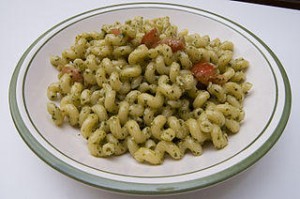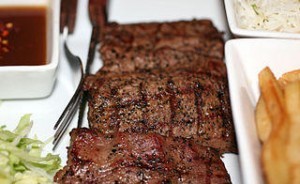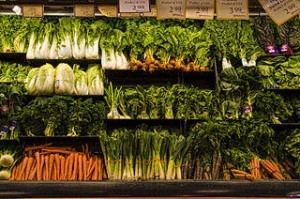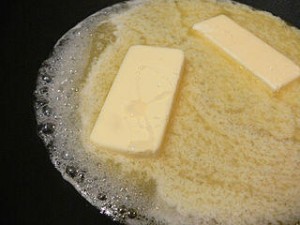A Guide Serving Size When Estimating Food Portions
Eating more than we should is a problem in the modern world. It is not only the size that is the problem but the total calorie intake in a day. Often it is much more than what our body needs which explains the obesity epidemic that is seen across the developed world. The problem has reached epidemic proportions and is a concern for health authorities across the globe. However, the fundamental issue lies in the fact that people are eating more than they should and this excess is stored as fat.
If cutting back on your meal portions is not an option for whatever reason, then you have to shift the calorie balance by burning it through exercise. Unfortunately the modern lifestyle has left most people doing less physical activity largely due to the conveniences provided by technology. It is therefore essential to go back to the basics at meal time. A balanced diet is essential for health and wellbeing but more food does not necessarily translate into a healthier body. In fact the opposite is true.
Problem With Measuring Portion Sizes
The problem that most of us face is to understand just how much is enough. Fast foods in particular pack large amounts of calories and offer extremely large portion sizes at very low cost. We are often led to believe that these portion sizes are “normal” for an adult but this is untrue. Not all of us are well versed with the calories in individual foods to calorie count throughout the day. Neither are we going to weigh every morsel of food on a scale. Relying on reasonable portion sizes depends more on the eye, some knowledge of the food pyramid and good judgement to make the right decisions.
The food pyramid or food guide pyramid has existed since the 1970s. It ensures sufficient intake of a variety of foods to ensure a balanced diet. It is sometimes confusing and not without problems. Recent efforts to simplify the system into a graphical illustration of a plate with 4 basic portions of certain groups of food (grains, vegetables, fruits and protein) with a small bowl of additional dairy is another system that is being used these days. Refer to ChooseMyPlate.gov for further information. However, much still depends on estimating portion or serving size.
Here are some of the daily guidelines for eating according to calorie content (to control daily calorie intake) and the food pyramid based on portion/serving size for balanced meals.
Calorie Count
- Men = approximately 2,500 calories daily
- Women = approximately 2,000 calories daily
Food Pyramid
- Starches (bread, cereal, rice or pasta) = 6 to 11 servings
- Vegetables = 3 to 5 servings
- Fruits = 2 to 4 servings
- Dairy = 2 to 3 servings
- Protein (meat, fish, poultry, dry beans) = 2 to 3 servings
- Fats, oils and sweets = use sparingly
The portion size that qualifies as one serving depends on the food in question. A serving is often best measured in cups. However, you need to consider whether you are looking at cooked or uncooked. Some foods shrink while others expand after cooking. The other problem is that many people will not actually fill food into a cup to measure it or may not weight every single item. Here is a quick guideline.
Starches
How much is one serving of starch?
Rice and pasta can expand significantly once cooked, so it is best to look at one serving of these starches in the cooked equivalent. If you are looking at cooked pasta, a one cup size serving is equivalent to the size of a tennis ball. The same measurement applies to brown cooked rice. Although potato is a vegetable, it is often considered under starches. One portion of a baked potato would be around the size of a computer mouse.
Protein
How much is one serving of protein?
If you do have a scale at hand then it is advisable to weigh your meat before you eat it. Ideally it should be about 3 ounces to qualify as one serving be it meat, poultry or fish. Alternatively, one serving of meat would be about the size of your palm or a deck of playing cards. One serving of a fish fillet would be about the size of a checkbook. For protein like peanut butter, one serving would be about the size of a ping pong ball.
Vegetables
How much is one serving of vegetables?
While all the different foods are important for health, it never hurts to have extra vegetables. However, the way you prepare the vegetables makes a difference. If it is fried, laden with butter or cream then you are consuming more fats and dairy then you should. Steamed, baked or grilled are the best cooking options. One serving of vegetables is about half a cup or around the size of a baseball.
Fruit
How much is one serving of fruit?
The big question when it comes to fruits is whether you are looking at dried or fresh fruits. Dried fruit can have as much as 4 to 5 times the calories of the fresh equivalent. One serving of dried fruit would be around a quarter cup which roughly equates to the size of an egg or golf ball. When it comes to cut fresh fruit, half a cup would be about one serving. For whole fruit, a tennis ball sized fruit will be considered as one serving.
Dairy
How much is one serving of dairy?
Depending on the dairy product that you are looking at, the size of one serving can vary drastically. One serving of milk or yogurt would be one cup or approximately 250mL. One serving of cheese is approximately 1 to 1.5 ounces and when cut into cubes this would be the equivalent to six playing dice. If you are not cutting it into cubes then you can size it according to two 9 volt batteries to calculate approximately one serving.
Fats and Oils
How much is one serving of fats or oils?
The type of fat is extremely important as much as the serving size. Saturated fats and trans fats are known for the adverse health implications and should be avoided altogether. But fats are important for health, although in very small quantities. One cube-shaped serving of margarine, butter or oily spreads would be about the size of a playing dice. For oils and salad dressing, one serving would be about a thumb tip or not more than 5mL.
References:
www.hsph.harvard.edu/nutritionsource/pyramid-full-story/
www.niddk.nih.gov/health-information/weight-management/just-enough-food-portions






